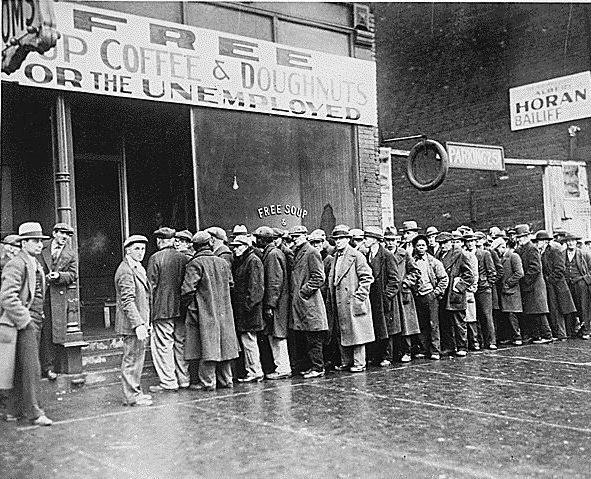In a period of unstable economic situation, due to the imperfection of the banking system, as well as the crisis, the problem of competition and weight of the company in the market of goods and services becomes more relevant than ever. It is no secret that weak enterprises have more prerequisites for an unfavorable outcome of events - from insolvency to bankruptcy. However, in modern conditions, even stable organizations may face the risk of failure. Thanks to the techniques developed by scientists in the field of economic sciences, bankruptcy of legal entities can be predicted. True, this is not so simple, and often the result is not absolutely accurate.
Prerequisites for the need to identify bankruptcy
The activity of economists aimed at analyzing the solvency of enterprises received its demand at the time of the end of World War II in the United States.

This was due to a decrease in the order for the supply of military equipment and the uneven development of companies.
Thus, bankruptcy models would inevitably become one of the main components on the path to a healthy development of the economy.
The first attempts were reflected in a qualitative research method, conducted by experimental impact on the activities of the company. Subsequently, without receiving the desired effect, the approach to the problem was changed.
So begin to develop methods that assess the bankruptcy of legal entities.
Effective Model Development
Dominant role solvency analysis enterprises. However, it is impossible without the use of generalized information, based only on financial statements. So various factor models of bankruptcy analysis find their application. The main among them is the Altman model.

At the same time, one should not be mistaken in the judgment that Altman's works were limited to one scheme. He created several approaches to the analysis of the solvency of the company, combining them with a statistical focus and proposing several options for calculation methods.
So, among them we can note the calculation of the credit rating index - Z-score, as well as two-, five- and seven-factor models.
Multi-discriminant analysis
It was he who formed the basis of all models and appeared to be the most relevant for the necessary calculations. It was first proposed in 1968 as a way of calculating possible bankruptcy risks and was used in the Z-score model.

Its main principle was the expression of economic indicators of the company, which fully reflects the activities of the enterprise and demonstrates the degree of risk of bankruptcy.
Edward Altman, before creating a Z-score model, studied the financial activities of about 70 enterprises. Some of them continued their activities at the time of the experiment, and some had already gone bankrupt. Having examined more than 20 analytical coefficients and selecting the most significant ones, Altman built a multifactorial dependence. It is characteristic that the indicators used to compile the model indicate the efficiency of the enterprise for the reporting period. Thus, one can easily track the probability of bankruptcy.
Imperfect model
However, despite its simplicity and logic, this Altman model has several disadvantages. For example, providing company data may be difficult. Not every company at the dawn of its collapse is ready to openly talk about it. But even if the information is provided on time, there is no guarantee that it will be reliable.In addition, sometimes a combination of the same factors can be considered both from a positive point of view and from a negative point of view, therefore it is extremely difficult to speak about the unambiguity of the assessment.
Five-factor Altman model
This model is one of the variations of the Z-score formula. It consists of 5 coefficients, based on which we can conclude on the profitability of the company. The main difference between this model is its relevance for enterprises having a joint-stock form and, as a result, issuing their own shares in market circulation.
In general terms, it is represented by the following variables, where x1 stands for working capital, x2 is retained earnings, x3 is operating profit, x4 is the value of stocks on the market, and x5 is revenue.
When assembled, this formula appears before us:
Z = 1.2 * X1 + 1.4 * X2 + 3.3 * X3 + 0.6 * X4 + X5
Thanks to her, the five-factor Altman model allows you to most accurately predict probable bankruptcy. For example, if the Z-module falls to a level of less than 1.8, it is possible with a probability of up to 100% to talk about the company's unprofitability. Conversely, if the level is higher than 2.99, then the risk of impossibility of paying off debts is minimal.
Expert comments
However, this model has been criticized by other scientists. Having examined the carefully presented form, you can notice that the value of x1 will always mean a management crisis, and x4 to talk about a possible financial crisis. The remaining variables characterize the economic crisis. 
That is why the Altman formula is not compiled correctly, and the model itself contains a number of inaccuracies. But, despite this, it is still used and is very popular.
Seven-factor model
Following the five-factor model, a seven-factor Altman model was developed. It is rarely used in practice, although it is the most accurate. The term that can be predicted reaches five years.
The reason for its lack of demand is too much analytical data, which is impossible to obtain for a simple interested person. In addition, the coefficients proposed for analysis, as in the case of the five-factor model, characterize several types of crisis at the same time.
Conclusion

Using any Altman model, one should keep in mind the other initial conditions. For example, the practice used in enterprises at the time of an already developed economy may not be applicable and even illogical in the conditions of the Russian economic system. Despite the seeming universality of the approach, it is important to remember the reverse side of the coin. The accuracy of the forecast is determined by the homogeneity of the data, the specifics of the enterprise and its personality. It is these components that are not enough for completely reliable information about the solvency of the company.
Often, the expected indicators are far from reality, and a company counting on further growth and prosperity suffers a loss after a loss. Thus, the effectiveness of bankruptcy assessment does not depend directly on the derived formulas and developed models, but is based on a number of indicators. To successfully predict the risks of insolvency and subsequent bankruptcy, you need to remember this, not relying entirely on the results obtained during the application of a particular method.






